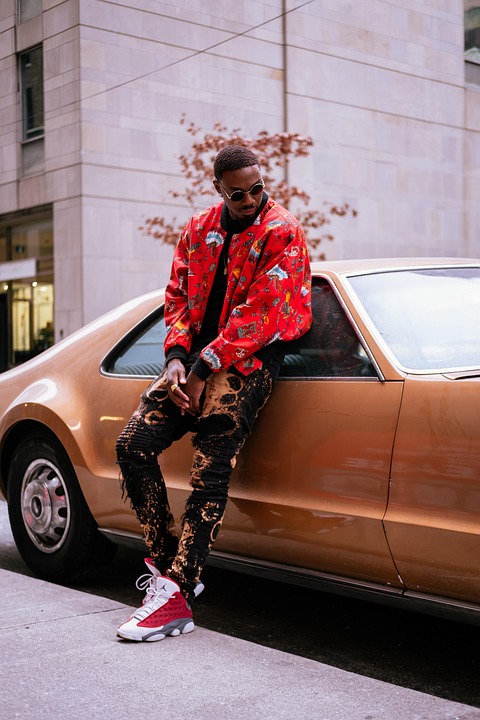Electric Dreams: The Future of Classic Cars in a Green Era
As society shifts toward sustainability, the world of classic cars must adapt to an eco-conscious landscape. Enthusiasts and collectors are increasingly asking: Can the charm of classic cars thrive in a world dominated by electric vehicles (EVs)? The answer lies in the innovative fusion of nostalgia with modern technology. This article explores the electrification of classic cars, showcasing how they can encapsulate the beauty of yesteryear while embracing the environmentally friendly technologies of tomorrow.
Reviving Classic Cars with Electric Power
The Rise of Electric Conversion Kits
Electric conversion kits are revolutionizing the world of classic automobiles. These kits allow aficionados to replace traditional internal combustion engines with state-of-the-art electric drivetrains, breathing new life into century-old models. Companies like Zelectric Motors and Classic Car Electric lead the charge, offering tailored solutions that prioritize both performance and authenticity.
These conversions provide several benefits:
- Environmental Impact: Reduced carbon footprints are at the forefront as classic cars evolve into greener alternatives.
- Performance Enhancements: Electric motors deliver instantaneous torque, leading to superior acceleration and drivability compared to vintage gasoline engines.
- Longevity: Electric components require less maintenance, offering future-proofing for beloved vehicles.
Preservation of Heritage and Aesthetics
Many classic car enthusiasts cherish the visual and tactile elements of their vehicles. Electric conversions don’t compromise on style; rather, they enhance the experience. Custom builders often integrate electric motors discreetly and use batteries designed to fit beneath the floorboards or in the trunk space, keeping the timeless essence while providing modern-day efficiency.
Popular Models Getting the Electric Treatment
Some notable examples of classic cars being electrified include:
- Volkswagen Beetle: A favorite among enthusiasts, the Beetle’s iconic shape is now complemented by a quiet electric motor.
- Porsche 911: The legendary sports car has been revitalized with electric technology, maintaining its performance edge while reducing its environmental footprint.
- Ford Mustang: New electric conversions are proving that muscle cars can embrace sustainability while retaining their raw power and aesthetic appeal.
The Classic Car Community’s Response
Preservation vs. Progression
While the adaptation of electric power in classic cars is thrilling, it is not without its controversies. Purists argue that modifying original vehicles alters their historical integrity. However, many collectors and enthusiasts view electrification as a way to preserve these models for future generations.
- Restoration Purity: Original specifications are vital for some collectors focusing on antiques.
- Balanced Opinions: Many in the community embrace a hybrid approach, retaining the original components while upgrading key aspects to electric power.
Creating a New Segment: Electric Classics
As electric conversions become more commonplace, a new segment within the automotive industry is emerging—Electric Classics. These vehicles represent a blend of nostalgia and innovation. Events such as the Goodwood Revival are starting to showcase electric classics, celebrating the best of both worlds and attracting a younger audience interested in automotive history framed within a sustainable narrative.
Challenges Facing Electrification of Classic Cars
Regulatory and Technical Hurdles
Transitioning to electric power isn’t without its challenges. Owners and dealers must navigate local regulations regarding vehicle modifications, emissions, and roadworthiness. Moreover, proper documentation and authenticity are crucial, especially for insurance purposes.
Costs and Skills
The initial cost of converting classic cars to electric can be significant. Not only is the installation of the electric drivetrain expensive, but finding skilled technicians who can perform the conversion correctly is also essential. Workshops specializing in these conversions are gaining popularity, catering to this growing niche market.
The Road Ahead: Sustainable Innovation
Embracing New Technologies
The future of classic cars in a green era relies heavily on the incorporation of new technologies. Beyond standard electric conversions, advancements such as autonomous driving tech and improved battery systems are set to play a significant role.
The Importance of Community Engagement
Ultimately, the ongoing dialogue among car enthusiasts, restoration experts, and electric vehicle proponents is vital. By sharing experiences and expertise, the classic car community can create a path that respects tradition while advocating for greener alternatives.
Experiencing the Shift
Whether you’re a purist or an innovator, the transition to electric classic cars is an exciting journey filled with potential. Attend local car shows that feature electric conversions or join online forums to explore the best practices and share your experiences.
Conclusion: A New Legacy
As we move deeper into a green era, classic cars can and should adapt to fit new environmental standards. By harnessing electric technologies, we not only preserve the charm and legacy of these vehicles but also create a sustainable future that honors their historical significance. Whether you are a collector, enthusiast, or simply an admirer, the electrification of classic cars offers a unique and tantalizing glimpse into a future where nostalgia and sustainability drive side by side.
For those eager to stay informed about the latest trends in electric vehicles and classic cars, keep following our articles at buzzo.live—your ultimate destination for automotive news and insights!


